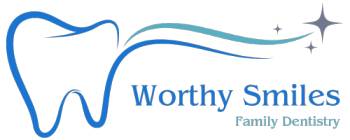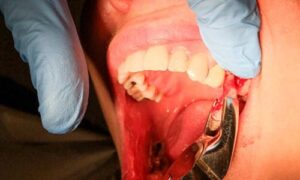How to Maintain Healthy Gums: Introduction
To safeguard your gums and overall oral well-being, consider the following tips for maintaining optimal gum health, including essential practices outlined in the guide on “how to maintain healthy gums.” This comprehensive guide will explore the importance of gum health and provide practical tips on preventing gum-related problems while maintaining optimal oral hygiene.
When considering your overall health, you might be tempted to overly prioritize your teeth’ well-being. While the condition of your teeth is undoubtedly significant, it’s crucial not to underestimate the importance of your gums, especially when it comes to maintaining a healthy smile. Even if your teeth are impeccable, free of cavities, and devoid of visible issues, neglecting your gum health can lead to diseases that may eventually result in significant problems adversely affecting your teeth.
Ensuring optimal oral hygiene, including regular dental check-ups and cleanings, is the foremost and crucial step in preventing gum disease. Maintaining healthy gums is a key consideration in this process. Unfortunately, a common oversight occurs as individuals focus on their teeth, inadvertently neglecting the significance of gum care. The realization that gums are vital in preserving a captivating smile is often overlooked. Gums act as a foundation, holding teeth in place and shielding them from potential harm. Ignoring gum health may result in tooth decay, necessitating costly dental interventions.
Understanding the Importance of Healthy Gums
- Preventing Gum Disease: Robust gum health protects against gum diseases such as gingivitis and periodontitis. These conditions can potentially induce gum inflammation, bleeding, gum recession, and even tooth loss.
- Enhancing Comprehensive Oral Well-being: The upkeep of healthy gums plays a pivotal role in promoting overall oral health, warding off oral infections, and diminishing the likelihood of tooth decay and cavities.
- Promoting General Well-being: Research has established a connection between gum disease and various systemic health issues, encompassing heart disease, diabetes, respiratory infections, and adverse pregnancy outcomes. By ensuring the health of your gums, you may effectively lower the risk of developing these conditions.
The Link Between Gum Health and Overall Well-Being
Recent research has highlighted the connection between oral health and overall well-being. Poor gum health has been associated with an increased risk of systemic conditions such as heart disease, diabetes, and respiratory problems. Recognizing the importance of “how to maintain healthy gums” is key to addressing this connection. Maintaining healthy gums is not just about preserving your smile; it’s crucial to promoting overall health and longevity.
Common Signs of Unhealthy Gums
Recognizing the signs of unhealthy gums is the first step in preventive care. Individuals must be aware of the indicators and manifestations of gum disease, as it often commences with mild symptoms that can escalate over time.
Gingivitis stands as the initial and mildest form of gum disease. Individuals experiencing gingivitis may observe red and swollen gums that easily bleed, accompanied by chronic bad breath. Fortunately, gingivitis typically does not involve pain or tooth loosening, and it can be addressed and reversed through diligent oral hygiene practices and professional dental care.
However, if left untreated, gingivitis may progress into periodontitis, where plaque and tartar extend beneath the gumline. The bacteria within the plaque can incite an inflammatory response, prompting the body to degrade the tissues and bone supporting the teeth.
The CDC found that severe gum disease, or periodontitis, affects about 9 per cent of adults in the US.
As periodontitis advances, the damage intensifies, forming deeper pockets between the teeth and the connective tissues. Initially, periodontitis may not exhibit noticeable symptoms, but individuals may observe the following signs as the disease develops:
- Receding gums, altering the appearance of tooth length.
- Loose teeth.
- Presence of pus between teeth or at the gumline.
- Persistent bad breath.
- Bleeding gums.
- Red and swollen gums.
Preventive Measures for Oral Health, Including “How to Maintain Healthy Gums”:
Maintaining good oral hygiene, including brushing and flossing at least twice daily, is crucial to thwart gum infections, cavities, and tooth loss. The American Dental Association (ADA) emphasizes the significance of having your teeth professionally cleaned and checked by a dentist or dental hygienist at least once a year. Despite diligent brushing, tartar and plaque can accumulate, posing a risk of gum problems. In addition to regular oral hygiene practices, understanding and implementing strategies on “how to maintain healthy gums” play a vital role in comprehensive preventive care.
For effective brushing:
- Brush in the morning and before bedtime.
- Use a soft-bristled brush with fluoride toothpaste, or consider an electric toothbrush if feasible.
- Angle your toothbrush at 45° against your gums and brush each tooth 15 to 20 times.
- Employ gentle, short strokes without scrubbing.
- Brush the outer tooth surfaces with short back-and-forth strokes.
- Use short downward strokes for inner upper front teeth; for lower inside teeth, use short upward strokes.
- Clean chewing surfaces with short back-and-forth strokes.
- Replace your toothbrush every 3 or 4 months or sooner if worn or frayed, especially after illnesses like colds or strep throat.
- Avoid covering or storing your toothbrush in a closed container to discourage microbial growth.
When it comes to flossing:
- Cut about 18 inches of floss and tightly hold it between your thumbs and forefingers.
- Slide the floss up and down between your teeth, curving it around each tooth in a C shape when it reaches the gum line.
- Gently rub the side of each tooth with up-and-down motions, ensuring you reach below the gumline.
- Repeat for all teeth, including the back side of your molars.
Watch your diet for optimal oral health:
- Include calcium-rich foods like milk, yogurt, cheese, canned fish, almonds, beans, green leafy vegetables, and calcium-fortified orange juice to maintain tooth-root-supporting bone.
- Limit sugary foods and drinks, especially sticky sweets like soft candies, toffees, taffies, and pastries.
- Rinse your mouth with water after consuming sweets, or consider brushing your teeth.
- Opt for sugar-free gum if you indulge in chewing gum.
Avoiding Harmful Habits
- Certain habits, such as smoking and excessive alcohol consumption, can have detrimental effects on gum health.
- Elevated stress levels can potentially compromise the immune system, elevating the susceptibility to gum disease. Incorporate stress management practices, such as engaging in regular exercise, practising meditation, and embracing relaxation techniques, to ensure the well-being of your gums.
Regular Dental Check-ups and Professional Cleanings
Preventive care is incomplete without regular dental check-ups and professional cleanings. This section will emphasize the importance of scheduling routine visits to the dentist and how professional cleanings can complement your at-home oral hygiene efforts.
The Role of Dentists in Preventing Gum Issues
Dentists are crucial in identifying and addressing early signs of gum problems. Regular check-ups enable them to monitor your oral health, provide guidance on preventive measures, and intervene if necessary to prevent the progression of gum disease.
Professional Cleanings for a Healthy Smile
Professional cleanings go beyond what can be achieved at home. Dental hygienists use specialized tools to remove plaque and tartar buildup, reducing the risk of gum disease. This section will explain the importance of these cleanings and how often they should be scheduled.
Conclusion: How to Maintain Healthy Gums
Maintaining healthy gums is a lifelong commitment that requires a combination of proper oral hygiene practices, a nutritious diet, and regular professional care. By understanding the importance of gum health and incorporating the preventive measures outlined in this guide on “how to maintain healthy gums,” you can enjoy a confident smile, protect your overall well-being, and ensure that your gums remain a strong foundation for a lifetime of oral health. Remember, prevention is key, and investing in the health of your gums today will pay off in the form of a beautiful and healthy smile tomorrow.
FAQs Related to How to Maintain Healthy Gums
FAQ 1: Why is prevention important in maintaining healthy gums?
Answer: Prevention is crucial for maintaining healthy gums because it helps avoid developing gum diseases such as gingivitis and periodontitis. By adopting proactive oral care practices and lifestyle choices, individuals can prevent gum inflammation, bleeding, recession, and potential tooth loss. Prioritizing prevention sets the foundation for sustained gum health and overall well-being.
FAQ 2: What are some practical tips for preventing gum-related problems and maintaining optimal oral hygiene?
Answer: Practical tips for preventing gum issues include consistent and proper oral care routines, such as brushing and flossing at least twice daily. Regular dental check-ups, a balanced diet rich in essential nutrients, and mindful lifestyle choices contribute significantly to optimal gum health. This comprehensive approach helps early detect and prevent potential gum-related problems.
FAQ 3: Can gum health impact overall well-being, and how does it contribute to systemic health?
Answer: Yes, gum health is interconnected with overall well-being. Research has linked gum disease to systemic health issues such as heart disease, diabetes, respiratory infections, and adverse pregnancy outcomes. By maintaining healthy gums, individuals may potentially reduce the risk of developing these conditions. Optimal gum health acts as a preventive measure not only for oral problems but also for broader health implications.














